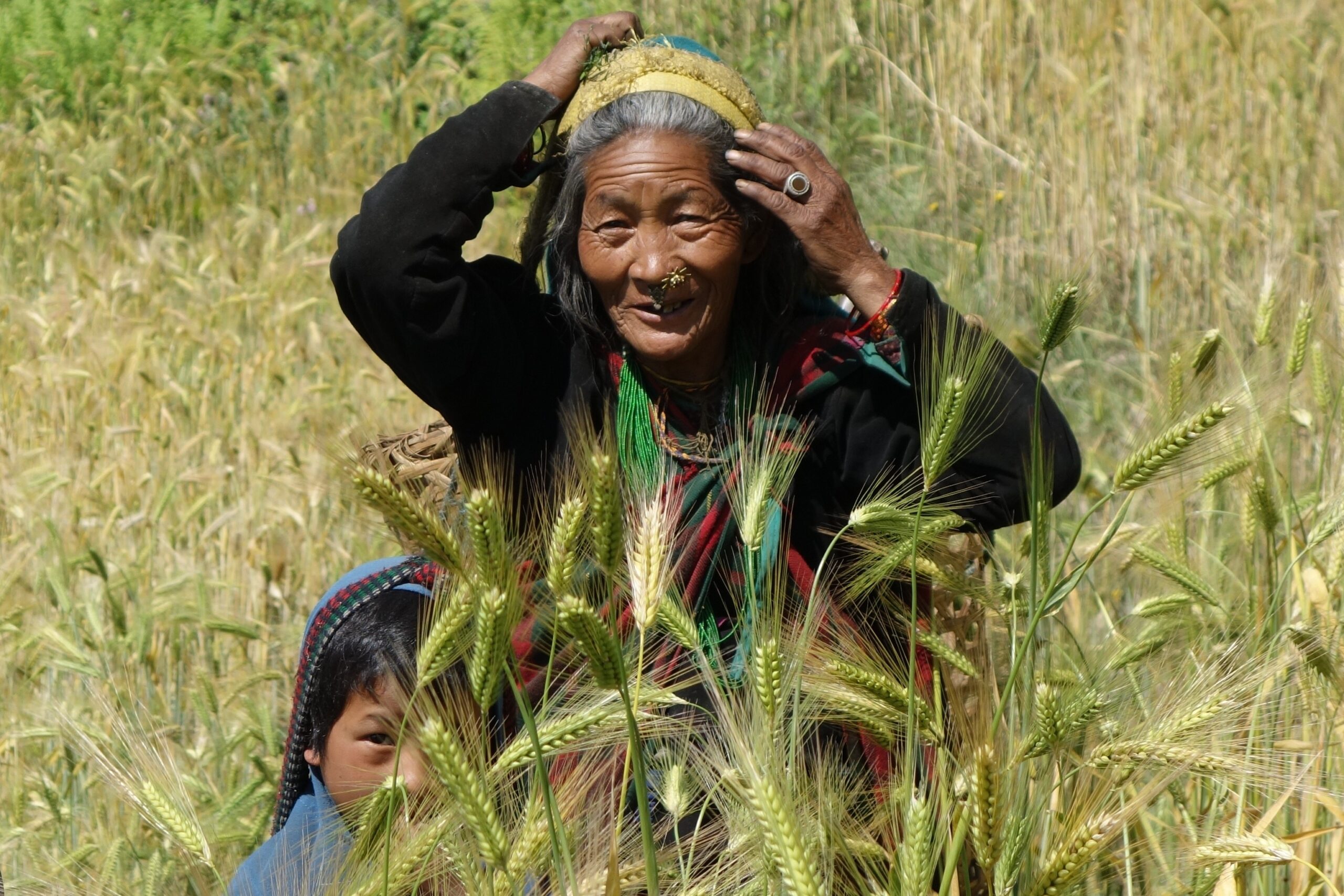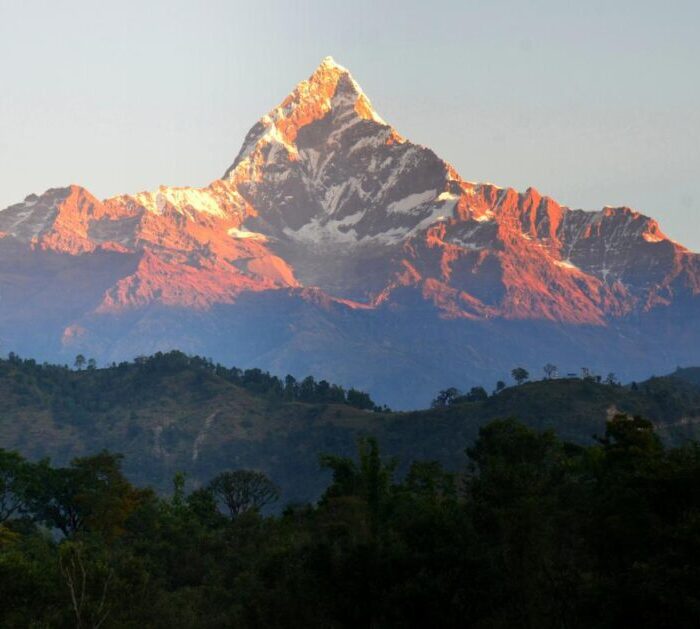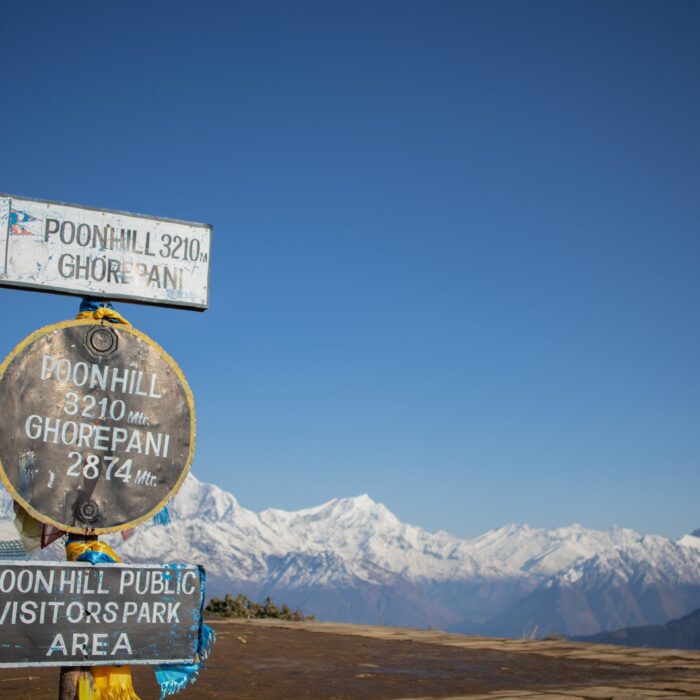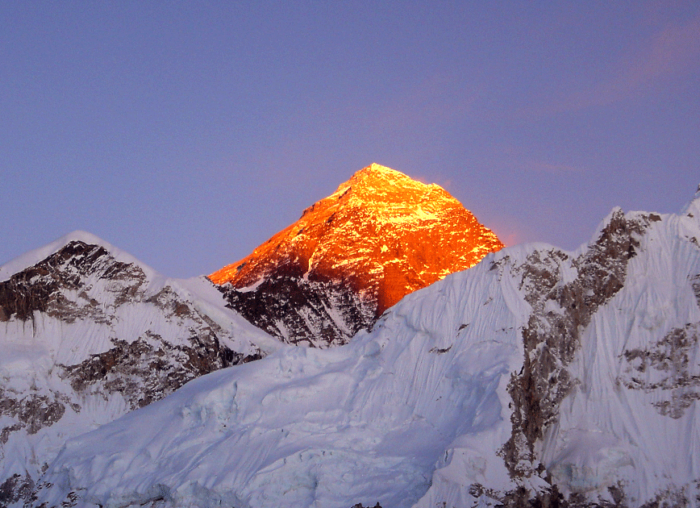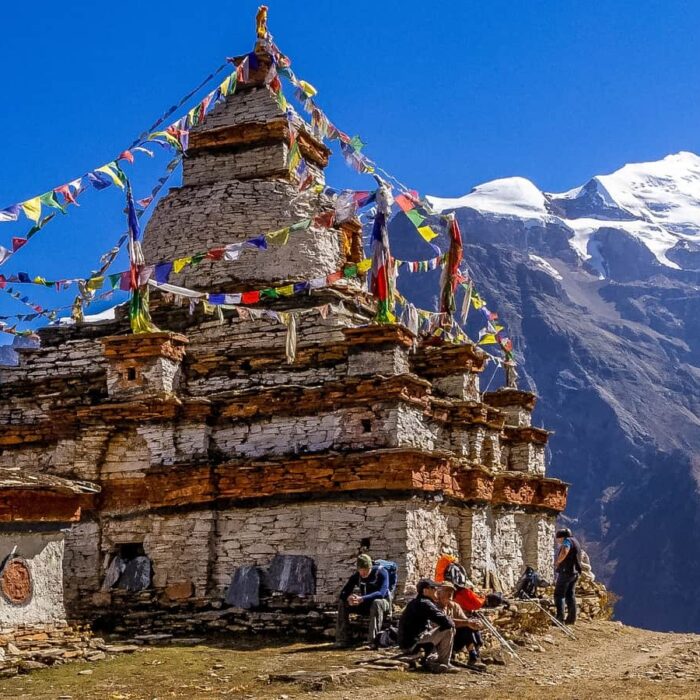Enjoy a 9-day Ruby Valley Cultural trek going through the Ruby Valley in Nepal’s Ganesh Himal region. This unique 9-day Ruby Valley cultural trek is famous for the precious gem Ruby, thus creating a special experience. Despite minimal gem mining, the area boasts valuable raw materials, including the coveted red stone.
Travel through Tamang and Gurung Villages. During the 9-day Ruby Valley cultural trek, immerse yourself in the cultures and traditions of the Tamang and Gurung villages. Gain further insights into ancient medicine and the Bon Po tradition, offering a deeper understanding of Nepal’s rich culture.
Experience a variety of landscapes along the Ruby Valley trail. Start from flat areas and hill side farms to both easy and challenging climbs. Similarly, go through lush forests, and grand snow capped mountains like Ganesh Himal, Langtang Lirung, Boudha Himal, Hiunchuli Dorje Lakpa, and many more. The Ruby Valley Cultural 9-day trek also features a highlight at the Pangsang Pass. This Pangsang Pass lies at 3,842m.
Homestays for an Authentic Journey
As this Ruby Valley cultural 9-day trek trail is relatively new, there are no lodges or guest houses. Even though there are no lodges or guest houses, there are local homes where you can easily stay. This stay at local homes will give you a true experience of Nepali rural life without a doubt. On the other hand, living with locals and getting the thrill out of their traditional cuisine will surely enhance the gravity of the Ruby Valley cultural 9-day trek.
Trek Style
The 9-day Ruby Valley Cultural Trek offers a trek experience that is accessible for first-timers and also for experts. The Ruby Valley cultural trek typically involves walking 4 to 6 hours each day. People have to go through hills, forests, and rocky lands. While prior trek experience is beneficial, first-timers can successfully undertake this trek with mental and physical preparation.
Challenges and Preparations
- Height Sick: The Ruby Valley cultural 9-day trek generally stays below 3000 meters, with the highest point being Pangsang La Pass at slightly over 3000 meters. It is a must to be careful about getting ill at high heights in Nepal. On the other hand, being physically fit and ready is vital.
- Weather Considerations: The Ruby Valley cultural trek difficulty depends upon weather conditions and temperatures. Preparation should align with the chosen trek season, considering the likely weather.
Best Time to do Trek
- Spring Season (March to May): Enjoy pleasant and warm weather with easy paths adorned with rhododendrons, orchids, and magical scenery.
- Autumn Season (September to November): After the monsoon, the 9-day Ruby Valley cultural trek offers clean trails, fresh air, and a festive atmosphere. During this time, the weather provides clear views of the mountains.
- Summer Season (June): June is perfect for the Ruby Valley Cultural trek, but July and August experience heavy monsoon rains, making trails wet and slippery.
- Winter Season (December to January): While not the best time for the Ruby Valley cultural 9-day trek, winter presents unique and fine views. However, you have to be ready for strong winds and severe cold.
Permits for Trek
Despite being a new trail, the trek doesn’t require special permits. A TIMS (Trekkers’ Information Management System) permit and a Langtang National Park Entry Fee are sufficient. The route passes through Syabrubesi and Gatlang, both within the national park boundaries.
Other trek options
Besides the 9-day Ruby Valley cultural trek, we have other trek options which are listed down below:
Please check our trek equipment list. This list will be a guide for you if you plan to trek in Nepal. Similarly, you can check our AMC (Acute Mountain Sickness) which can be a good guide for you to learn more about getting ill on high heights in Nepal. Also, if you want to do a Peak climb in Nepal then please check the climbing equipment list that is a must while going on the Peak climb. Likewise, we suggest you check the updated TIMS card rule as there have been some new changes in Nepal.
Booking is Open for 2024 / 2025
Are you planning to do a tour in 2024? If so, then in our Best Deals part, you can find the ideal information on the best price for the tour cost. Furthermore, book plans as soon as possible.
Contact us or Send a message or call us at
WhatsApp / Viber / Mobile: + 977 – 9851 022814, + 977 – 9841 451681
We are available 24/7
For further information, Contact us.
Itinerary
<strong>Day 1: Arrive in Kathmandu (1,310m/4,296ft)</p>
You arrive at Kathmandu International Airport, and one of our office representatives will meet you, welcome you in a Nepali traditional way by flower garland then drop to your pre-booked hotel. Check-in at the hotel, rest a bit, and then visit Alliance Treks & Expedition (P.) Ltd. For briefing your program, introduce your guide and porters and hand over trekking documents. In the evening leisure or personal activities.
Overnight at Hotel in Kathmandu
Day 2: Kathmandu (1310m/4297ft) – Dhading Besi (612m/2007ft) – Percho (1520m/4986ft) – 116km
After your breakfast at the hotel, with your trek guide and porter/s, drive by regular local bus/Micro Bus Or you may reserve your private vehicle then drive to Dhading Besi passing through Prithvi Highway after 3 hours you will arrive at Dhading Besi The district headquarter of Dhading District. Rest a bit and then changing another regular local Jeep sharing with other locals, drive to Dundure Khola (a 4-hour drive) passing through majestic landscape through Jumre Hill, Katunje, Lapang Phedi, and Dharkha village finally arrive at Dundure Khola. The road goes all the way up to Borang village however you start your trekking from Dundure Khola for the acclimatization. After walking for 2-3 hours, finally arrive at Percho village and overnight at a Local House.
Meals Included: Breakfast, Lunch, Dinner & Overnight at Local House (Home Stay)
Day 3: Percho (1520m/4986ft) – Sertung Village (2,020m/6,625ft) – 7km, 6-7 hours walking
Take breakfast at the same local Lodge and then at 8:00 AM trek via bit hairpin trail in Lisne Jungle to Borang Village (1700m/5576ft), 3km, 3 hours walking, take lunch then trek continue trek via Awoi village (1,750m/5,740ft) to Sertung Village the biggest Tamang village of Ruby Valley. On the way scenic views of Ganesh Himal ranges, Awoi Valley, Galga Mane, and finally arrive at Sertung village with incredible views of Chalish Village. Overnight at Local House/Homestay.
Meals Included: Breakfast, Lunch, Dinner & Overnight at Local House (Home Stay)
Day 4: Explore Ghale Durbar – trek to Chalish village (1,550m/5,084ft). 6 km, 4-5 hours walking
Early morning visit Ghale Durbar (2450m/8036ft), 45 minutes walking, take a look at the striking Panoramic views of Ganesh Himal ranges, and breathtaking Ruby Valley views, and then visit Phyanchyat Gompa (Monastery), Chyamra Devi, Khaten Gompa and Sertung village. Takes about 4-5 hours, finally, return to the same place, take lunch, and then trek to Chalish Village (30 minutes walking). In the evening enjoy the Gurung cultural show of the Gurung mother and father group for about 2 hours.
Overnight at-home stay.
Meals Included: Breakfast, Lunch, Dinner & Overnight at Local House (Home Stay)
<strong>Day 5: Visit Tatopani and trek to Tir Village ((1,820m/5,970ft). 7km, 6 ½ hours walking
After breakfast, trek down to Khar Khola passing Chalish villagers’ paddy terraces, Khar Khola then the small village Pasabar Visit Tatopani/Hot Springs(1,050m/3,444ft), 5 km, 2 ½ hours walking, enjoy a couple of hours in Tatopani, take lunch and then trek to Tir Village (1,820m/5,970ft), 4 hours walking.
Overnight at-home stay.
Meals Included: Breakfast, Lunch, Dinner & Overnight at Local House (Home Stay)
Day 6: Trek to Khading Village (2,020m/6,625ft). 10km. 7-8 hours walking.
Take breakfast at the same homestay and then trek passing bit hairpin hilly trails (this area is a bit dangerous of rock falling and hairpin trails so trekkers are strongly recommended to walk only with a trekking guide or Sherpa porters) to reach Rachyat village (1,520m/4,985ft) and then continue trek passing through Kapur Gaun (1,350m/4,428ft), bit downhill walking and passing a suspension bridge walk an hour uphill then arrive at Lapchyat Village (1,520m/4985ft). Take lunch and then via Kupchyat village (1,850m/6,068ft) trek continues to Khading village. Finally arrive at Khading village (2,020m/6,625ft). It’s the biggest Gurung village in the area and another best villages of the Ruby Valley culture shows of Gurung Mother Group and Lama Dance as well as other different cultural programs.
Meals Included: Breakfast, Lunch, Dinner & Overnight at Local House (Home Stay)
Day 7: Trek to Lapa Village (1,850m/6,068ft), – Borang Village (1,550m/5,084ft). 8km, 4-5 hours walking
Wake up, fresh up, and then take local breakfast around 8:00 am trek to Lapa village (1 hour walking) and look around Lapa village. This village is known as the biggest Tamang community village of Ruby Valley. Ruby Valley Tamang culture, Ruby Valley Cultural trek, Ruby Valley landscape, Ruby Valley trekking trails, and Ruby Valley home stay as well as Ruby Valley Experience this is the village from where you will see fantastic Tamang community houses which are pretty much linked one to another. This is a village pretty much similar to Sertung village, Hindung, and Neber Village too. It’s much better than Langtang Trekking, Annapurna Trekking, and Manaslu Trekking. Trek downhill to Ankhu Khola (Ankhu Khola has many hydro project construction going on) and after an hour of uphill walking finally arrive at Borang village.
Overnight at-home stay.
Meals Included: Breakfast, Lunch, Dinner & Overnight at Local House (Home Stay)
Day 8: Borang to Dhading Besi (612m/2007ft) then continue drive to Kathmandu (1,310m/4,296ft). 98km, 11h hours driving
Take breakfast at the same place and then by regular local sharing jeep drive to Dhading Besi and then change another jeep, drive to Kathmandu. Total 11 hours of driving and 80% of the road is dirt, rough, and tough driving only from Dhading Besi to Kathmandu, 3 hours of driving is the black-topped road. Although technically nothing tough however road being quite rough, bumpy, and turnings, it is still called moderate driving.
Check-in at the hotel and overnight at the hotel.
Meals Included: Breakfast, Lunch & Overnight at Hotel in Kathmandu
Day 9: Departure for home country
Take breakfast at the same hotel, the rest of the morning leisure or personal shopping/activities, and then in the afternoon drop at the international airport for home country departure with “Sweet Memory” of Nepal, Ruby Valley Culture Trekking.
Frequently Asked Questions (FAQ)
<strong>Q1. What is the Ruby Valley cultural trekking famous for?
This mountain boasts deposits of the precious gem, Ruby. The Ruby Valley trek is an enthralling journey, encompassing diverse landscapes and walking terrains. From flatlands to terraced farms, gradual and steep climbs, to breathtaking vistas of lush green forests and towering snow-capped peaks, this trek offers a remarkable and varied experience. Ruby Valley cultural trekking is the best experience ever you will find with the most unique culture of Gurung, Tamang, Ghale, Dalit, and Newari. Trust us, those ethnic groups who perform their cultural shows in this region are very different than any other similar cultural group in another area of the trekking region in Nepal.
Q2. What kind of cultural experience do we expect in the Ruby Valley Cultural Trekking?
Having a local guide during the Ruby Valley cultural trekking ensures an incredible cultural experience. Depending on your group size and available time, your guide can coordinate with locals for various cultural performances. These may include Gurung and Tamang Lama Dances, and Tamang cultural dances like Mane Nach, Jhakri-Shamanism, Mhendo Maya, Saikhole, Badel Dance, and Para Mhendo dance. Additionally, you can enjoy Gurung cultural shows like Ghatu, Maruni, Chutka, and Dohori, Dalit Cultural shows with Maleshree and Lokgeet, Nuewari Cultural shows featuring Lakhe dance, and Ghale cultural shows with Okhare, and more.
While we don’t insist on payment, you have the option to contribute a bit of cash to local mothers, fathers, or youth groups, which will be reciprocated with a special cultural performance. Your guide will be in charge of organizing this tour, so you can consult with them during your trek or discuss it with us before your trek departure.
Q3. Is a honey hunting tour possible in Ruby Valley cultural trekking?
“Yes, if you ever plan to visit Nepal during the first week of July (monsoon season), it will be an ideal time to witness the fascinating tradition of honey hunting. Additionally, you can also experience this activity in November and December. During these seasons, local communities engage in harvesting wild honey. However, if you wish to have a truly exceptional and immersive experience, you are more than welcome to arrange special honey-hunting tours with your camera crew. This will undoubtedly provide you with the best honey hunting experience compared to any other region.”
Q4. Is the hot spring (Tatopani) bath worth taking in Ruby Valley cultural trekking?
“Tatopani Hot Spring, located about 2 hour’s walk from Chalish village, holds a special festival organized by the local government in coordination with Ganesh Himal Tourism Development (GHTDC). The Ruby Valley locals gather to take baths, as it is believed that the hot spring waters can cure various skin diseases and provide relaxation while alleviating body pains. If you’re on a cultural trek through Ruby Valley, a hot spring bath comes highly recommended.”
Q5. What are food and accommodations like in the Ruby Valley cultural trekking?
“Food provided during the trek will be simple and basic, consisting of breakfast, lunch, and dinner. Accommodations will primarily be in dormitory-style lodges, where you’ll be sharing rooms with other trekkers or members of your group. In some places, you may get a private room with a common bathroom. The accommodations are in local homestays, which provide restroom facilities (toilet) but no shower rooms. Instead, you will be provided with a bucket of hot water for showering whenever you need.”
Q6. How do you manage drinking water?
“We will provide boiled water for drinking, which is safe to consume. However, to ensure and further safeguard your health, we will also supply water purifying tablets or liquid during your trekking journey.”
Q7. What is transportation like in the Ruby Valley cultural trekking?
“For your trekking starting and ending points, we offer local sharing Jeeps and Minibusses. However, if you prefer a more comfortable and private experience, we can arrange a reserved private Jeep for you. It’s important to note that the road to the trekking area is newly built, making it quite rough and challenging. Traveling in local shared Jeeps might be inconvenient due to narrow seats and squeezing, which is a common experience for everyone. If you choose to reserve a private Jeep, it will be more comfortable, albeit at a slightly higher cost.”

